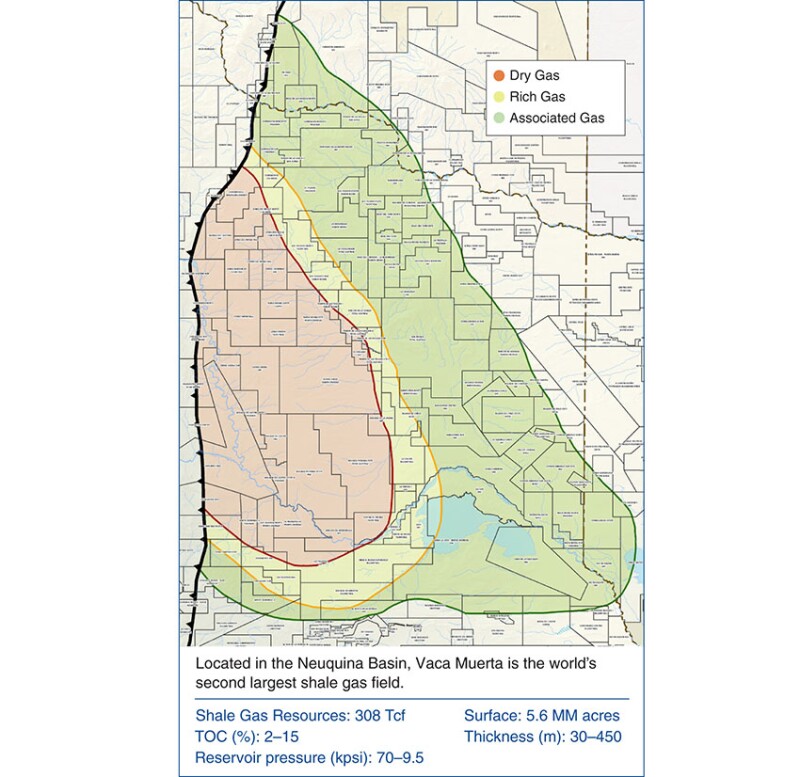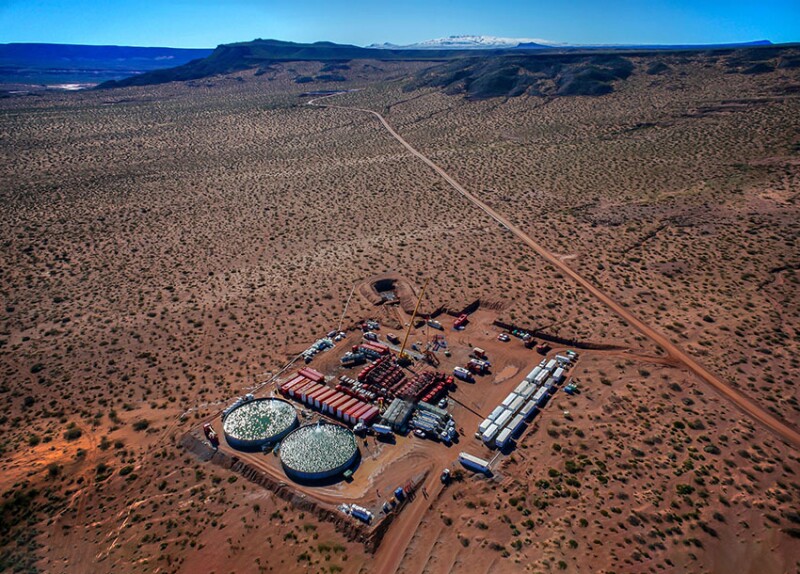Shell’s entry into a project development agreement (PDA) with Argentina’s state-owned oil and gas producer YPF to initiate Phase 1 of the Argentina LNG export facility may have just reset the debate over whether Buenos Aires can reap the benefits hidden in its vast shale reserves.
The facility proposed for construction at Sierra Grande, Río Negro, on Argentina’s Atlantic coast, is intended to use dedicated blocks in the Vaca Muerta shale formation in western Neuquén Province whose gas reserves rank as the second-largest technically recoverable shale gas resources globally. The US Energy Information Administration estimates 308 Tcf, located in approximately 30,000 km2.
The PDA to jump-start the $50 billion Argentina LNG project obligates Shell and YPF to collaborate on pre-front-end engineering and design (FEED) activities until a decision is taken on FEED, YPF said in a press statement in late December 2024.
Phase 1 envisions deployment of two FLNG units with a combined production capacity of 10 mtpa. Construction of onshore facilities would follow in Phase 2 and 3, raising total capacity to 30 mtpa with gas reaching the liquefaction facility via 580 km of dedicated pipelines, YPF said.

Tax Breaks Lure Investments
But Argentina LNG isn’t alone. Two other LNG liquefaction and export options are also now under study as Argentina seeks energy independence and a piece of global LNG revenues in the 2030s and beyond with projects driven by Buenos Aries’ new Basis Law which incentivizes investments to construct pipelines and export terminals associated with Vaca Muerta.
Projects exceeding $200 million are guaranteed 30 years of legal and regulatory stability if 40% of the investment is made within the first 2 years; projects over $1 billion are eligible for tax breaks including export and import tax exemptions.
The LNG initiatives now competing with Argentina LNG include
- The Southern Energy FLNG facility championed by 50% BP-owned Pan American Energy, YPF, and shipping company Golar LNG would utilize the Golar Hilli vessel with a capacity of 2.45 mtpa.


